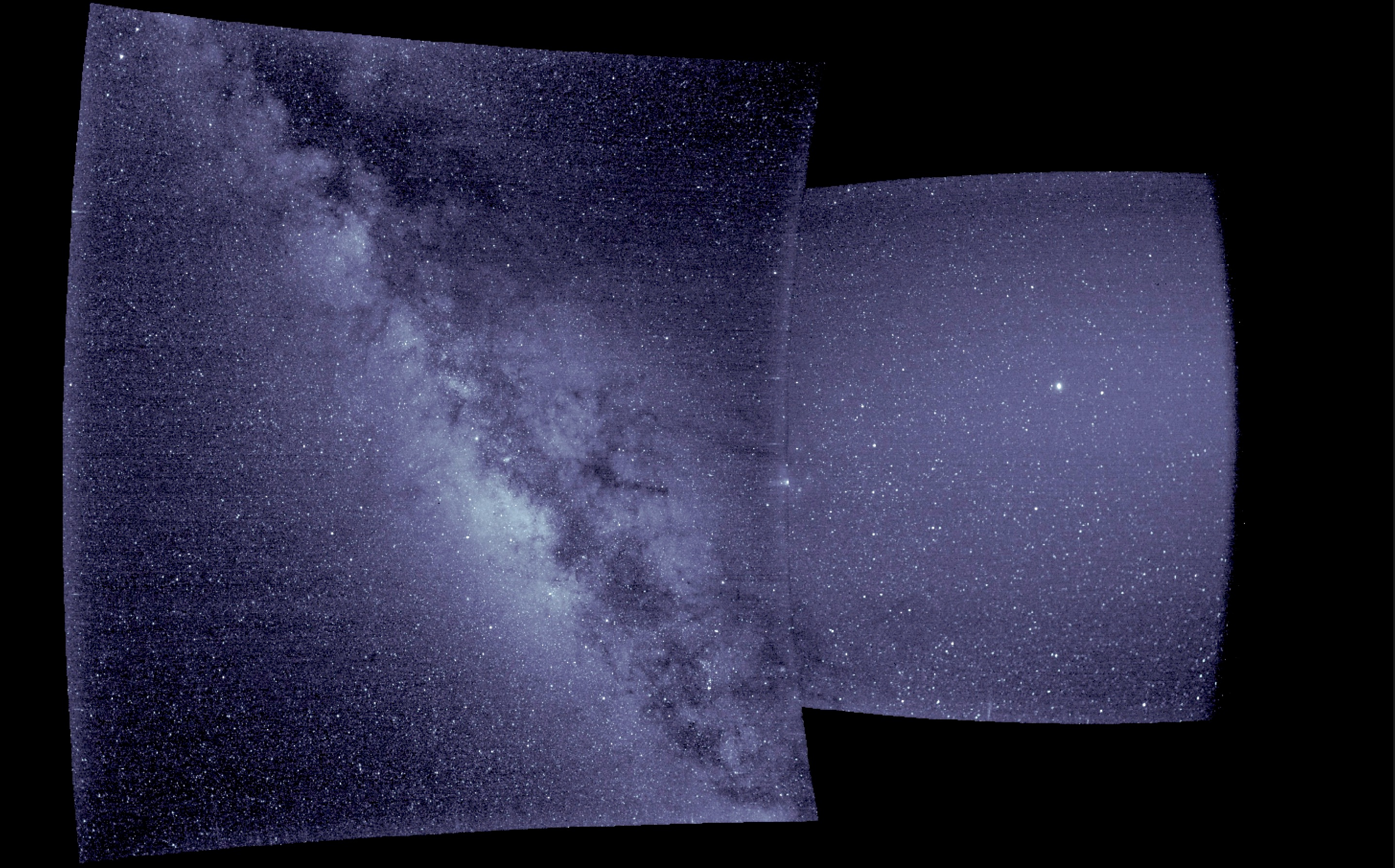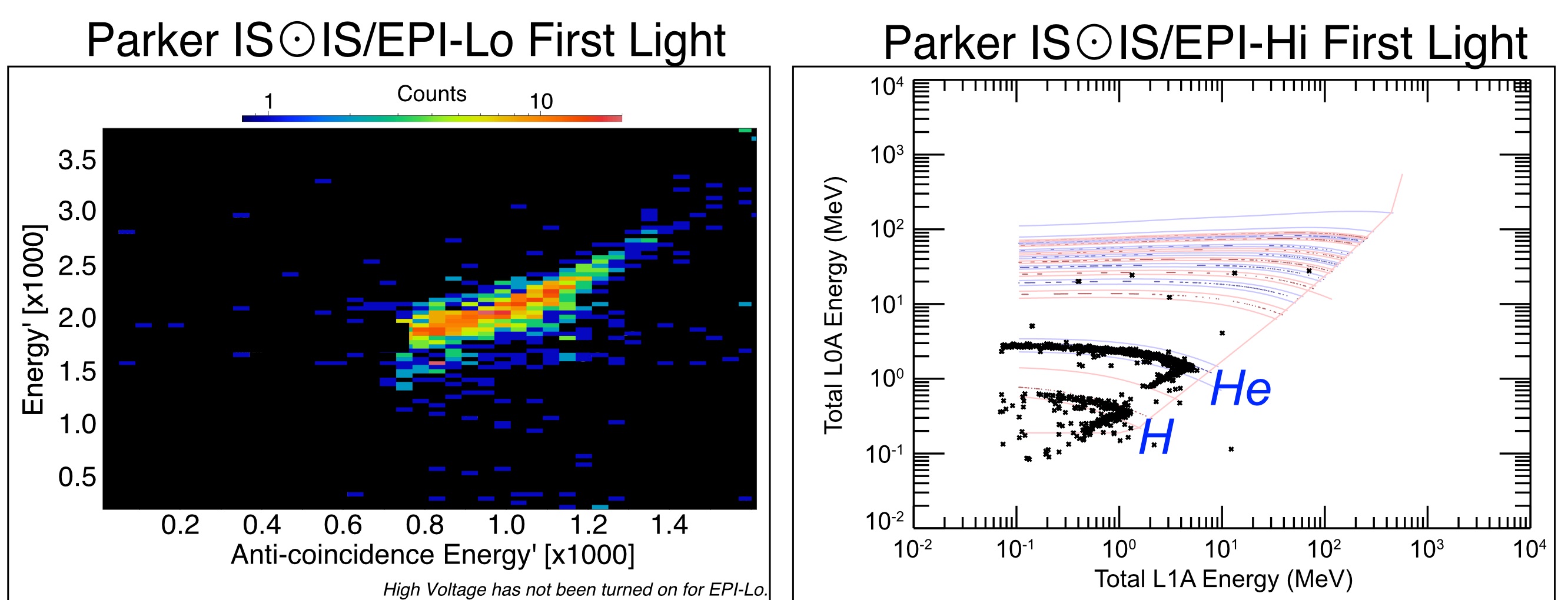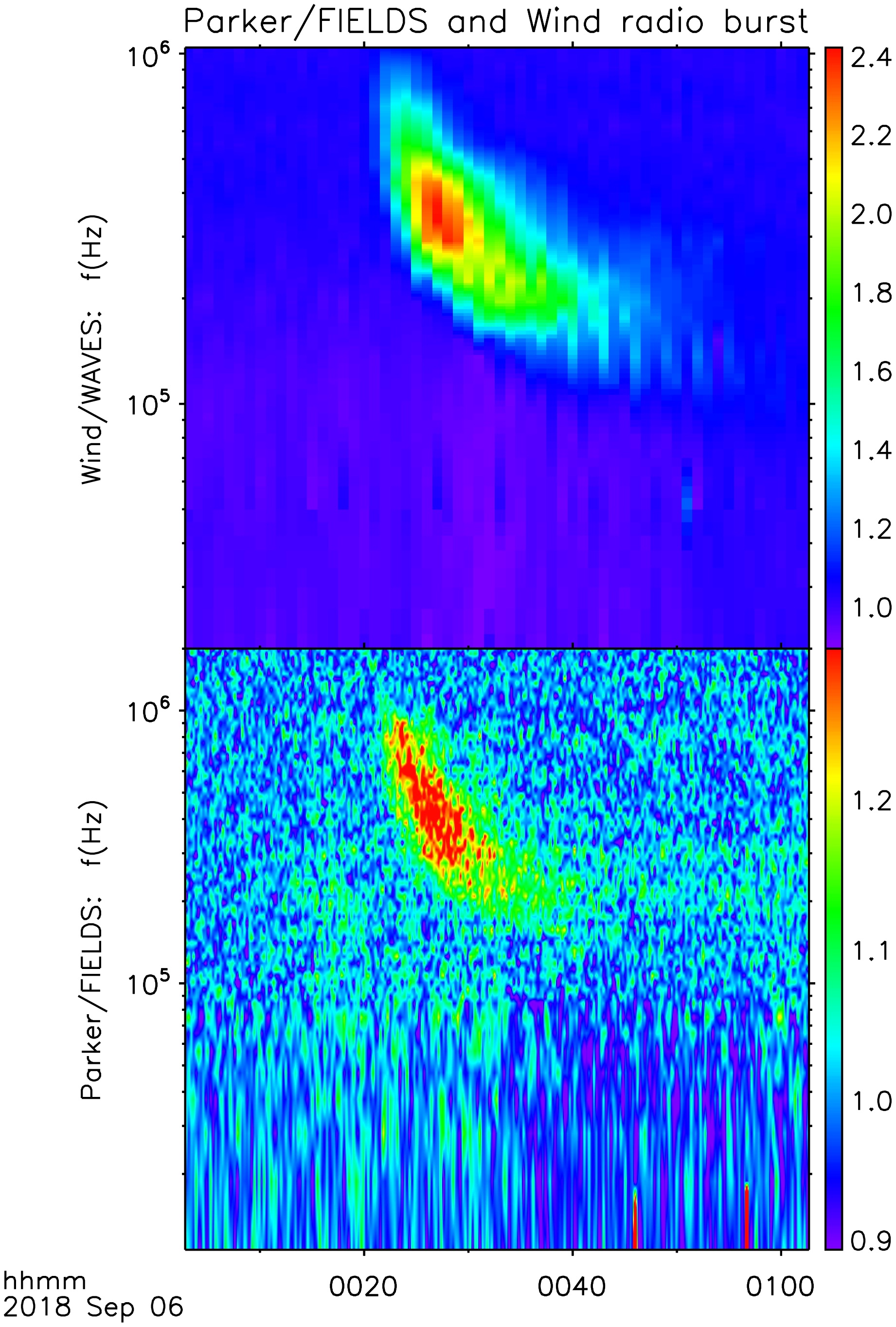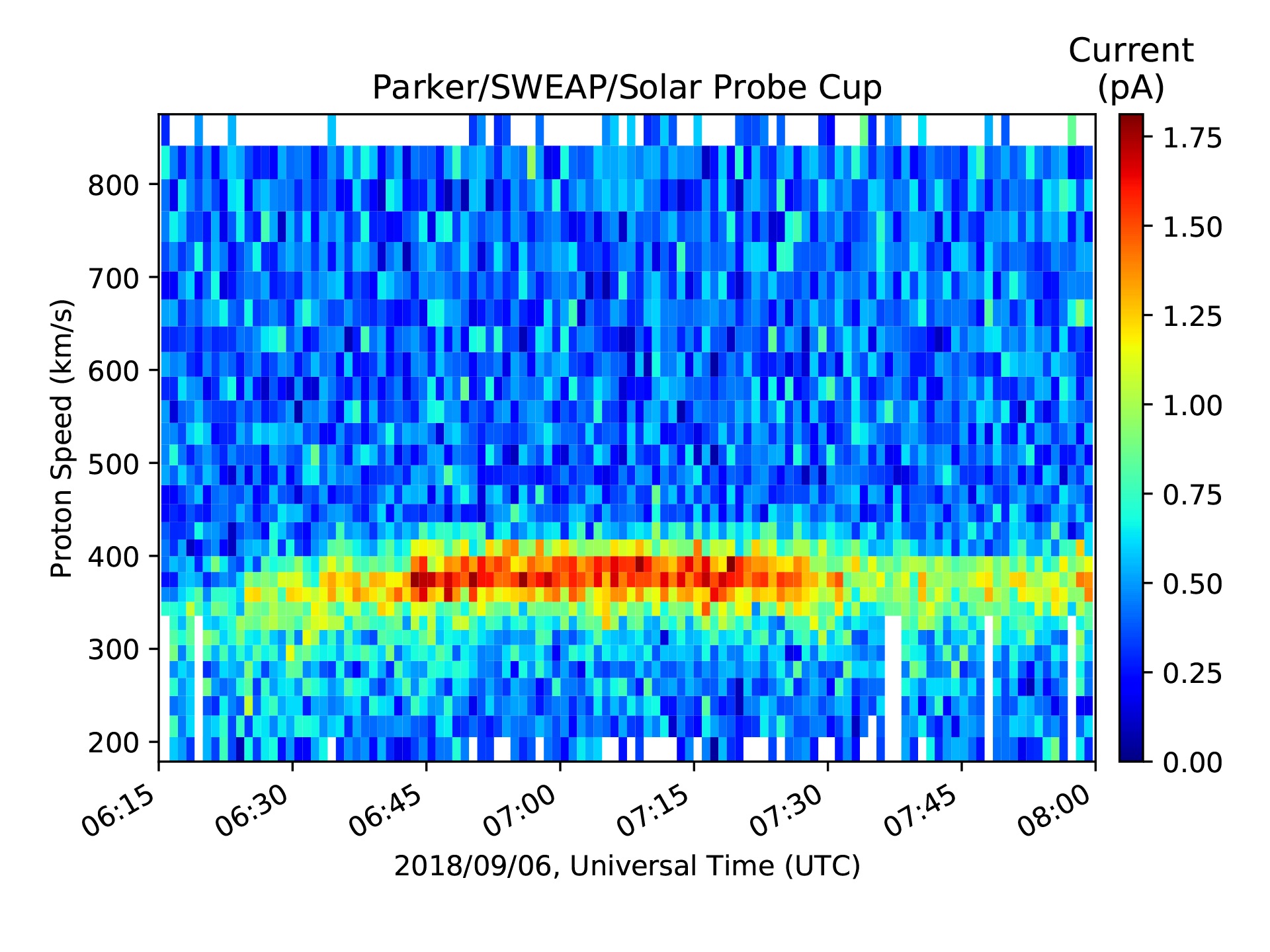Here Comes the Sun! Parker Solar Probe Instruments See 'First Light'

As Parker Solar Probe prepares for an unprecedented close-up of the sun, the new spacecraft sent data home showing that all is well in the mission. The probe's instruments showed the band of the Milky Way and picked up evidence of the solar wind, the constant stream of particles emanating from the sun.
The spacecraft will swoop close to the sun in November of 2018 and, over the course of seven years and many orbits, will take periodic close-ups of the sun and zoom by Venus several times. Parker will come within 4 million miles (6.4 million kilometers) of the sun on its closest orbit; that's more than eight times closer than the planet Mercury gets to the sun.
One big mystery that Parker may help shed light on, so to speak, is why the sun's corona (or upper atmosphere) is so much hotter than the layers below. The corona's temperature ranges from 1.7 million degrees Fahrenheit (1 million degrees Celsius) to more than 17 million degrees F (10 million degrees C), according to the National Solar Observatory. By contrast, the photosphere or "surface" of the sun reaches roughly 10,000 degrees F (5,500 degrees C). [In Photos: NASA's Parker Solar Probe in the Clean Room]
But to investigate that phenomenon, Parker's four instrument suites need to work correctly. Fortunately for mission investigators, the first data sent back in the month after launch shows that everything is working fine.
"All instruments returned data that not only serves for calibration but also captures glimpses of what we expect them to measure near the sun to solve the mysteries of the solar atmosphere, the corona," project scientist Nour Raouafi, who is based at the Johns Hopkins University Applied Physics Lab in Maryland, said in a NASA statement.
Here's what each of the instruments returned:
- WISPR (Wide-Field Imager for Solar Probe): A new image from the two WISPR telescopes captured a dark portion of the Milky Way galaxy as well as the star Antares, which is in the constellation Scorpius. Eventually, WISPR will send back images of the corona and other parts of the sun's atmosphere.

- ISʘIS (Integrated Science Investigation of the Sun): This consists of two instruments that measure high-energy particles associated with activity on the sun, such as solar flares or coronal mass ejections of charged particles. The two instruments picked up cosmic rays (on the higher end of the energy spectrum) that come from outside of the galaxy, as well as hydrogen and helium particles (on the lower end of the energy spectrum). When the instruments are closer to the sun, they will seek evidence of solar energetic particles.

- FIELDS (Electromagnetic Fields Investigation): This instrument will measure magnetic and electric fields in the sun's atmosphere to help scientists better understand why the corona is so much hotter than the photosphere. The first data that FIELDS sent back was collected when the instrument's antennas, attached to a boom, were deployed, shortly after the spacecraft's launch. Investigators caught a glimpse of the spacecraft's own magnetic field during the deployment; the strength of the field dropped off as the boom extended away from the spacecraft.

- SWEAP (Solar Wind Electrons Alphas and Protons): This suite has three instruments: a cup that measures the solar wind and two solar probe analyzers that look at charged particles in that wind. Investigators saw a gust of solar wind blowing into the cup shortly after they first turned on the instrument, even though the orientation of the spacecraft was not expected to yield measurements. Later on, the analyzers examined the solar wind for short periods.
You can download all the data from these instruments at this NASA website.
Get the Space.com Newsletter
Breaking space news, the latest updates on rocket launches, skywatching events and more!
Follow us @Spacedotcom, Facebook and Google+. Original article on Space.com.
Join our Space Forums to keep talking space on the latest missions, night sky and more! And if you have a news tip, correction or comment, let us know at: community@space.com.

Elizabeth Howell (she/her), Ph.D., was a staff writer in the spaceflight channel between 2022 and 2024 specializing in Canadian space news. She was contributing writer for Space.com for 10 years from 2012 to 2024. Elizabeth's reporting includes multiple exclusives with the White House, leading world coverage about a lost-and-found space tomato on the International Space Station, witnessing five human spaceflight launches on two continents, flying parabolic, working inside a spacesuit, and participating in a simulated Mars mission. Her latest book, "Why Am I Taller?" (ECW Press, 2022) is co-written with astronaut Dave Williams.









